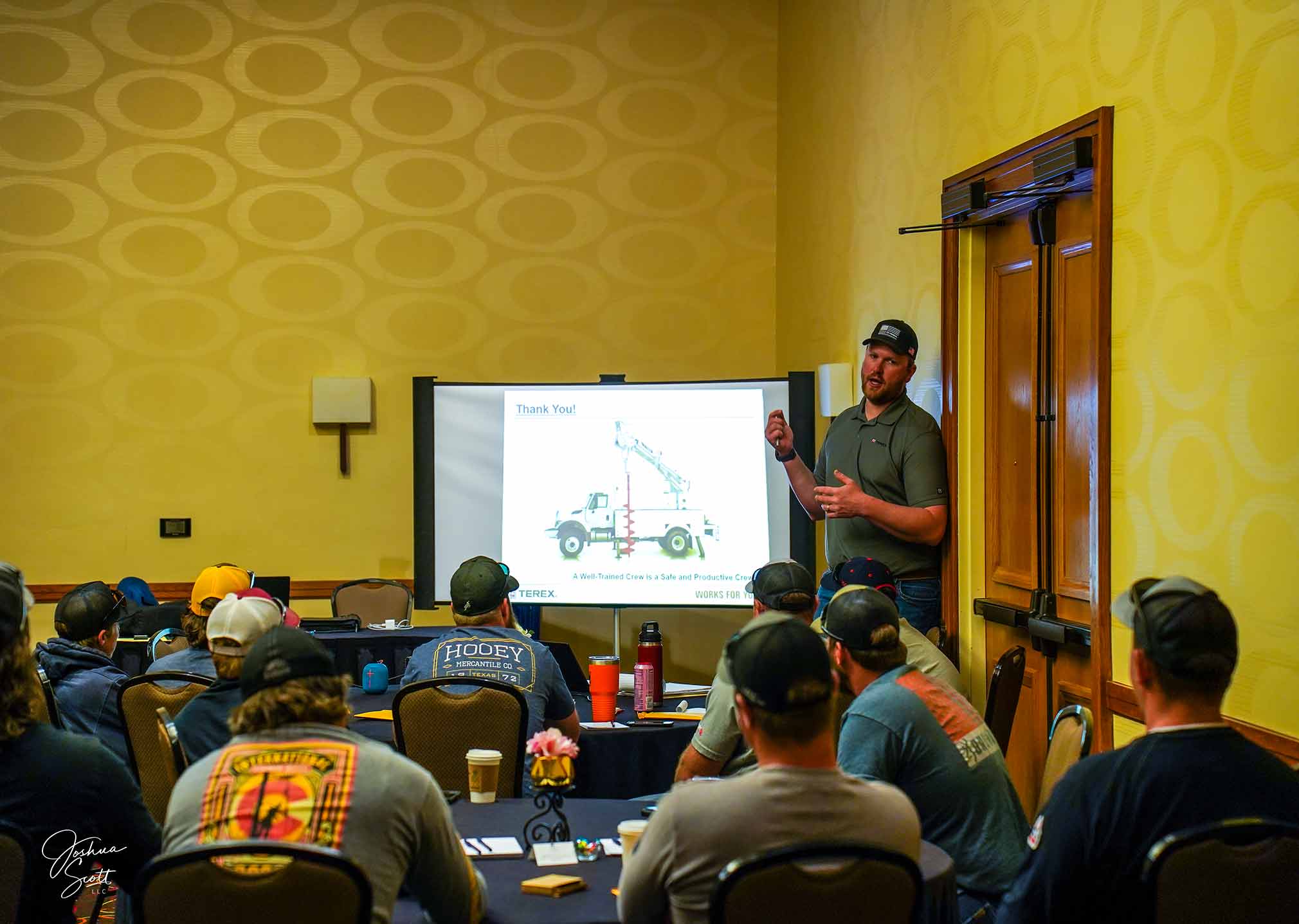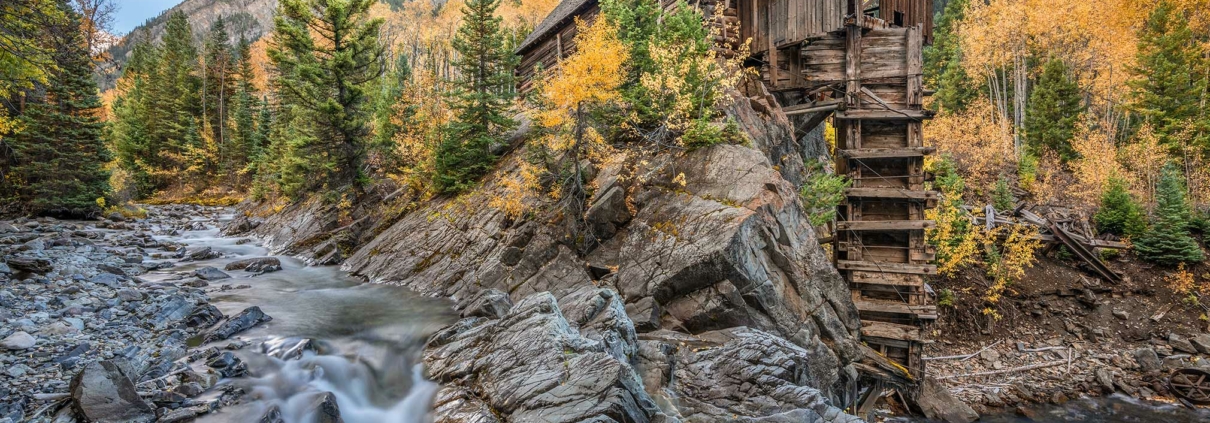By Amy Higgins
All photography provided by Rick Harness, EDM
Our nation’s bird populations have been a topic of concern since the early 1900s when the Migratory Bird Treaty Act was enacted to control market hunting. As decades passed, additional legislation was added to protect birds from modern-day human conveniences, safeguarding wildlife while also protecting the grid.
This came to the forefront when, in the late 1990s, the U.S. Fish and Wildlife Service prosecuted Moon Lake Electric Association for violations of the Bald and Golden Eagle Protection Act and the MBTA. Although MLEA is based in Utah, it’s notable that a large portion of their service territory is in Colorado, which is where eagles were found electrocuted.
Cognizant of bird electrocutions on their lines, electric co-ops reached out for guidance. Colorado cooperatives banded together through CREA, their trade association, and contacted utility consulting firm EDM International’s Certified Wildlife Biologist Rick Harness, who stepped in to help develop Avian Protection Plans or APPs. Today, every electric cooperative in Colorado has an Avian Protection Plan. In fact, “[Colorado] was the first state to do a holistic program,” Harness said.
Safeguarding Wildlife: APPs Take Flight
At a consulting firm in Missoula, Montana, Harness first witnessed avian electrocutions from power lines — he would stumble on a dead or injured bird under a power line. Eight years later, he came to Fort Collins to work at a consulting firm and go back to school to earn his master’s degree.
For his master’s work, Harness reached out to rural electric cooperatives, researched their services structures, identified at-risk bird species and recorded how frequently electrocutions occurred. This allowed him to assess the population impacts of power line mortality and came up with recommendations to help protect birds and strengthen the reliability of electric service.

A golden eagle sits on an unprotected pole, which needs a conductor cover added.
It was around 1997 that the Fish and Wildlife Service decided that distribution lines caused an unacceptable level of bird mortality and that the problem wasn’t going away. Harness’s experience and knowledge earned him a role as a liaison between MLEA and the FWS, and a key role in the development of an early, precedent-setting APP.
Using his thesis work as a guideline, Harness concluded that it wasn’t necessary to retrofit every power pole in a utility’s distribution system. Instead, utilities could identify the poles and habitats that presented the greatest risks and put their dollars there.
“Moon Lake was happy because they didn’t have to do wholesale retrofitting. The Fish and Wildlife Service was happy because we were bringing science into it, and it was a third-party person that was taking responsibility for it,” Harness said.
Soon after, CREA contacted Harness and a statewide effort was proposed to develop a more streamlined process for Colorado electric cooperatives.

A Ferruginous hawk rests on a 3-phase pole protected with a conductor cover on the center pin.
EDM started at Empire Electric Association in Cortez. Once the report was developed, it was vetted and approved by the FWS; then the rules were applied statewide. It took approximately three years for EDM to inspect all of the Colorado electric cooperatives’ systems and develop APPs.
As word got out about the APP, additional utilities followed suit and contacted EDM, including the Public Service Company of Colorado (Xcel Energy) and the Air Force Academy. “There’s excellent coverage across the state for Avian Protection Plans, and CREA was at the center of that effort,” said EDM Project Manager Duncan Eccleston.
Taking Wildlife Under Wing
To develop an APP, the utility’s current standards, structures and land are analyzed and a report of the consulting firm’s findings and recommendations is presented to the utility. Priority is given to high-risk poles and habitats where electrocutions and/or collisions are most likely to occur.
Recommendations for safeguarding wildlife may include adding insulation, creating additional spacing, if possible, or adding the proper products to existing structures so wildlife can avoid hazardous contacts.
 The utility’s APP also includes a reactive program so it can quickly mitigate a problem when it arises and a proactive risk assessment to determine the biggest threats to the system and the surrounding environment, including wildlife.
The utility’s APP also includes a reactive program so it can quickly mitigate a problem when it arises and a proactive risk assessment to determine the biggest threats to the system and the surrounding environment, including wildlife.
These recommendations are invaluable and welcomed. After an engaging lineman training visit, SDCEA in Buena Vista was prompted to ask Eccleston to make annual visits going forward.
“The co-op lineman is really the focus because they know more than anybody and they see more than anybody,” Eccleston explained. “They have a lot at stake; they really do care.”
“We know [the APP] is not going to eliminate wildlife interactions, but at least it will minimize the impact,” said Holy Cross Energy VP of Operations Cody O’Neil. The Glenwood Springs electric cooperative used its original APP until around 2008, when it began updating and amending its plan. More changes were made in December 2019 to better align with current best practices.
“We believe that our outage numbers have decreased so our system reliability has increased,” O’Neil said. “We don’t have as many — part of this could be technological advances in some other areas as well — but we don’t have as many unknown outages as we did 20 years ago.”
In 2019, Grand Junction–based Grand Valley Power worked with Colorado Parks and Wildlife to build a nest for a pair of ospreys that claimed a pole in De Beque. Using APP guidelines, GVP linemen installed a new base for their avian members, waited, and then revisited the site to find the ospreys nesting in their new home.
APPs: More than Meets the Eye
“I think one misnomer that unfortunately a lot of folks attribute to avian protection is that it only benefits birds,” O’Neil said. “There are quite a few other critters out there that end up not getting electrocuted because we use these tactics.”
Raccoons. Squirrels. Really, any nonflying animal has added shielding with APPs. APP standards and efforts also help prevent wildfires and wildfire-caused outages while safeguarding wildlife. For example, if a squirrel climbs onto a transformer that’s not up to APP standards, it could get electrocuted, fall to the ground smoldering and cause the grass to ignite.
Eccleston explained, “The other thing that can happen is, even if they don’t fall onto the grass, they could trigger an expulsion fuse — the fuse swings open and it sends out a bunch of molten gas and sparks that could also start a fire.”
Colorado’s electric co-ops cherish wildlife and aim to protect the beautiful outdoors while also maintaining a reliable electric infrastructure for consumer-members.
Amy Higgins is a freelance writer who has reported on issues that affect electric cooperative consumer-members and their surrounding environments for more than a decade.

 GCEA 2023
GCEA 2023


















